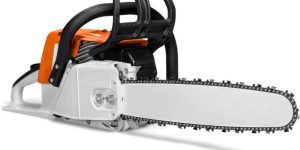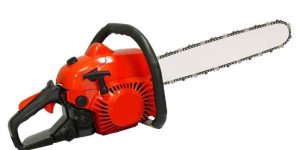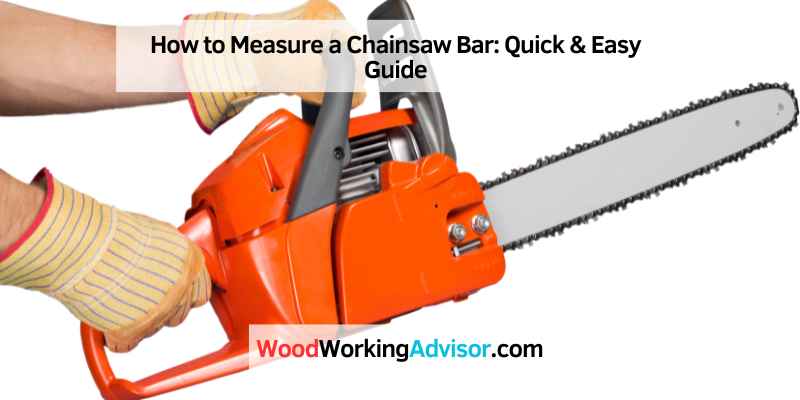To measure a chainsaw bar, start at the tip and measure to the point where it enters the chainsaw. Chainsaw bar length is typically measured in inches from the tip to the mounting area.
This measurement helps ensure the proper fit for replacement chainsaw bars. Chainsaw bars come in various lengths, such as 14, 16, 18 inches, among others, depending on the specific chainsaw model and application. Selecting the correct bar length is essential for safe and efficient chainsaw operation, as it impacts cutting capacity and maneuverability.
Understanding how to accurately measure a chainsaw bar is crucial for maintaining and optimizing your chainsaw’s performance.
Introduction To Chainsaw Bars
When it comes to using a chainsaw, understanding the components and measurements of the chainsaw bar is crucial for safe and efficient operation. The chainsaw bar is a fundamental part of the tool, playing a pivotal role in the cutting process. In this guide, we will delve into the various aspects of chainsaw bars, including their role, different varieties, and how to measure them accurately.
The Role Of A Chainsaw Bar
A chainsaw bar serves as the guide for the cutting chain, dictating the depth and precision of the cuts. It provides stability and support to the chain, ensuring smooth and controlled cutting. Understanding the role of the chainsaw bar is essential for selecting the appropriate size and type for specific cutting tasks.
Varieties Of Chainsaw Bars
Chainsaw bars come in a range of sizes and designs to accommodate diverse cutting needs. From standard to carving bars, each variety is tailored to different applications, such as felling, bucking, and pruning. It’s important to be familiar with the various types of chainsaw bars to make informed choices that align with your cutting requirements.
Importance Of Accurate Measurement
Accurate measurement is crucial when it comes to determining the size of a chainsaw bar. By following proper techniques, you can ensure that the measurements are precise, allowing for optimal performance and safety while using the chainsaw. Avoid guesswork and take the time to measure accurately for the best results.
Accurate measurement of a chainsaw bar is crucial to ensure compatibility with your chainsaw and to maximize efficiency and safety. A chainsaw bar is the long, straight part of the chainsaw that extends out from the body and holds the chain. In this article, we will discuss the importance of accurate measurement when it comes to chainsaw bars and how to measure them properly.
Ensuring Compatibility
To ensure compatibility, you need to measure the length of the chainsaw bar. This measurement is taken from the tip of the chainsaw bar to where it meets the chainsaw’s body. Chainsaw bars come in different lengths, and it’s essential to choose the right one that fits your chainsaw. Using a bar that is too long or too short can damage your chainsaw and compromise your safety. Refer to your chainsaw’s manual to determine the right bar length for your chainsaw.
Maximizing Efficiency And Safety
Using the correct chainsaw bar length is crucial to maximize efficiency and safety. A chainsaw with a bar that is too long for the powerhead will require more power to operate, leading to decreased efficiency and increased wear and tear on the engine. On the other hand, a chainsaw with a bar that is too short can lead to increased kickback, which is dangerous and can cause serious injuries. Therefore, it’s important to measure the chainsaw bar accurately to ensure maximum efficiency and safety.
To measure your chainsaw bar accurately, use a tape measure or ruler to measure the distance between the tip of the bar and the point where it meets the chainsaw’s body. Always measure from the furthest point of the chainsaw bar. Record your measurement and compare it to the specifications of the chainsaw bar you intend to buy.
In conclusion, accurately measuring your chainsaw bar is essential to ensure compatibility, maximize efficiency, and maintain safety. Always refer to your chainsaw’s manual for the recommended bar length and measure your chainsaw bar accurately before purchasing a new one.
Tools You’ll Need
To measure a chainsaw bar, you’ll need a measuring tape, a chainsaw filing guide, and a chainsaw depth gauge. Using these tools, you can accurately measure the length and width of the bar, as well as the depth of the chain’s cutters.
Tape Measure Or Ruler
For measuring the chainsaw bar, a tape measure or ruler is essential.
Cleaning Supplies
Prepare cleaning supplies to ensure accurate measurements.

Preparation Steps
To accurately measure a chainsaw bar, start by removing the chain and measuring the bar length from tip to the point where it enters the chainsaw body. Ensure the measurement is precise for compatibility with the right chain size. Follow the manufacturer’s guidelines for correct measurements.
Before measuring the chainsaw bar, it is essential to take some preparation steps to ensure safety and accuracy. In this section, we will discuss two critical preparation steps that you should follow before measuring the chainsaw bar: disengaging the chainsaw and cleaning the bar.
Safety First: Disengage The Chainsaw
The first step to take when measuring a chainsaw bar is to disengage the chainsaw. This means that you need to turn off the chainsaw and ensure that the chain is not in contact with the bar. Failure to do this can result in serious injury.
To disengage the chainsaw, follow these steps:
- Turn off the chainsaw by pressing the on/off switch.
- Remove the spark plug wire to prevent accidental starting.
- Move the chain brake forward to disengage the chain from the bar.
Cleaning The Bar
The next step in preparing to measure the chainsaw bar is to clean the bar. Over time, the chainsaw bar can accumulate dirt, sawdust, and other debris that can make it difficult to get an accurate measurement. Cleaning the bar ensures that you get an accurate measurement of the bar’s length.
To clean the chainsaw bar, follow these steps:
- Wipe down the bar with a clean cloth to remove any visible debris.
- Use a wire brush to remove any stubborn debris or rust on the bar.
- Apply a light coating of oil to the bar to prevent rust and ensure smooth cutting.
By following these preparation steps, you can ensure that you get an accurate measurement of the chainsaw bar. Remember always to prioritize safety when handling any power tool.
Measuring The Chainsaw Bar Length
Measuring the chainsaw bar length is a crucial step in finding the right chainsaw for your needs. To measure the length, start at the front tip of the bar and measure all the way to the furthest point at the back end of the bar.
Make sure to round up to the nearest inch for an accurate measurement.
Finding The Starting Point
Before you can measure the chainsaw bar length, you need to find the starting point. To do this, locate the point where the bar enters the chainsaw body. This is typically where the bar mounts onto the chainsaw. It can be found on the side of the chainsaw, near the engine housing.
Once you have identified the starting point, you can proceed to measure the chainsaw bar length accurately.
Measuring To The Tip
To measure the chainsaw bar length, you will need a tape measure or a ruler. Begin by placing the starting point of the tape measure or ruler against the edge of the chainsaw body where the bar enters. Make sure the tape measure is aligned with the bar and extends along its entire length.
Extend the tape measure or ruler all the way to the tip of the chainsaw bar. Ensure that it is straight and parallel to the bar for an accurate measurement. Take note of the measurement displayed on the tape measure or ruler.
If you are using a tape measure, the measurement may be displayed in inches or centimeters. Make a note of the measurement in the appropriate unit.
Pro tip: For chainsaw bars with a sprocket tip, make sure to measure up to the front of the sprocket. This will give you the correct length of the bar.
Now that you have successfully measured the chainsaw bar length, you can use this information to choose the right replacement bar or chain for your chainsaw. Remember to measure twice to ensure accuracy and double-check any measurement before making a purchase.
Determining The Gauge And Pitch
When it comes to using a chainsaw, understanding the gauge and pitch of the chainsaw bar is essential. These measurements play a crucial role in ensuring the proper functioning and safety of the chainsaw. Here, we will delve into determining the gauge and pitch of a chainsaw bar, providing you with the knowledge you need to measure them accurately.
What Is Gauge?
The gauge of a chainsaw chain refers to the thickness of its drive links. It is a vital measurement as it determines the fit of the chain in the guide bar. Common gauge sizes include .050″, .058″, and .063″.
What Is Pitch?
The pitch of a chainsaw chain refers to the distance between three rivets on the chain, divided by two. This measurement is crucial as it determines how tightly the chain fits around the guide bar. Common pitch sizes include 3/8″, .325″, and .404″.
How To Measure Both
Measuring the gauge and pitch of a chainsaw bar is a straightforward process. To measure the gauge, simply use a caliper to measure the thickness of the drive links. For the pitch, count the number of drive links in three feet and divide by two to get an accurate measurement.
Common Mistakes To Avoid
Following the manufacturer’s guidelines is crucial.
Not doing so can lead to safety hazards.
Always refer to the manual for accurate measurements.
Not Accounting For Wear And Tear
Regularly check for wear and tear on the chainsaw bar.
Ignoring this can affect the accuracy of measurements.
Replace the bar if signs of wear are present.
Maintaining Your Chainsaw Bar
When it comes to maintaining your chainsaw bar, it’s crucial to keep it in top condition for optimal performance and safety.
Regular Cleaning
Regular cleaning of your chainsaw bar prevents debris buildup and ensures smooth operation.
Checking For Damage
Regularly check your chainsaw bar for cracks, wear, or any other signs of damage.
When To Replace
Know when to replace your chainsaw bar to avoid potential accidents and maintain efficiency.
Conclusion: The Value Of Precision
Precision is crucial when measuring a chainsaw bar. Accurate measurements ensure the proper fit and optimal performance, enhancing safety and efficiency in operation. By valuing precision, one can guarantee the right bar size for their chainsaw, leading to effective and reliable use.
Recap Of Key Points
Measuring a chainsaw bar is crucial for safety and efficiency. Use a measuring tape to determine the length accurately. Check the manufacturer’s specifications for the recommended bar length. Always round down the measurement to ensure the perfect fit for your chainsaw.
Encouragement For Proper Maintenance
Maintaining your chainsaw bar is essential for longevity and performance. Regularly inspect and clean the bar, ensuring it’s free from debris and damage. Lubricate it according to the manufacturer’s guidelines to prevent premature wear and tear. Invest in a quality chainsaw bar to ensure durability and precision.

Frequently Asked Questions
How Do You Measure A Chainsaw Bar?
To measure a chainsaw bar, start by removing the chain and measuring the distance from the tip of the bar to the point where it enters the chainsaw’s housing. This measurement will determine the length of the bar, which is typically expressed in inches.
It’s important to measure accurately to ensure you purchase the correct replacement bar for your chainsaw.
What Is The Purpose Of Measuring A Chainsaw Bar?
Measuring a chainsaw bar is essential for selecting the right replacement bar for your chainsaw. Different chainsaw models require specific bar lengths, and using the wrong size can affect the performance and safety of the chainsaw. By accurately measuring the bar, you can ensure a proper fit and optimal functionality.
How Often Should You Measure A Chainsaw Bar?
You should measure your chainsaw bar whenever you need to replace it or if you’re unsure of its size. It’s also a good idea to measure the bar after any modifications or repairs to ensure it still fits correctly. Regularly inspecting and measuring the bar will help maintain the chainsaw’s performance and safety.
Conclusion
Understanding how to measure a chainsaw bar is crucial for maintaining your tool. By following the simple steps outlined in this guide, you can ensure that your chainsaw bar is the right fit for your needs. With the correct measurement and regular maintenance, you can enjoy efficient and safe chainsaw operation.


